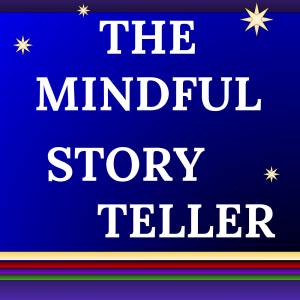
“It’s been a long time since somebody told me a story.” – Elderly Woman in Northeast Ohio
∞∞∞∞∞∞∞∞
Storytellers like myself will often tell you that our favorite section of the library is 398.2. In the Dewey decimal system, 398.2 represents the folk and fairy tale area of the library. If you like the Harry Potter series or The Lord of the Rings trilogy, if you’re a fan of fantasy or sci-fi books, please know that your favorite authors have steeped themselves in the works of 398.2.
We may think of fairy and folk tales as the domains of children, but that is only recent thinking. While the term “grim” did not, as is sometimes reported, come to us from the surname of the Grimm brothers who collected tales, the association is understandable: Many of Grimms’ Fairy Tales are indeed known for their grimness! While the lore of folk and fairy has always fascinated and enchanted youth, it was never intended to be especially for children. Folktales are simply the tales that folk told – and that some folks are still tellin’.
In her lovely collection of essays on fantasy, faerie, and folklore entitled Touch Magic, Jane Yolen writes, “The best of the old stories spoke to the listener because they spoke not just to the ears but to the heart as well.” The old folk and fairy lore were certainly entertaining, but they were always more than entertaining. They might be instructive – encouraging the community to reflect on its shared values. They might be illuminating – inspiring the heart to open to courage or vastness, to sorrow or compassion, to wonder or joy.
I write “were entertaining” and here I must correct myself. We so easily slip into past tense as we speak of the value of the folk story, as we think about the fireside storyteller. It is 2019 as I write this entry and two weeks ago, I had the pleasure and honor of sharing a couple of old folktales with a group of twenty-five or thirty willing listeners. There was one young child in the audience, a couple of middle-schoolers, some high school students, and lots of adults of various ages. The tales held them. They traveled to distant lands, encountered a magical bird, and heard lore of how a dead sheep’s shoulder bone could draw forth the fair folk. They entered the stories, just as I did, just as the tellers and the listeners did in the 1800s, and in the 1300s, and for time immemorial.
Years ago, an 85-year-old woman listened to a teller tell some old folktales. She came up to the storyteller after he had finished sharing the stories. She took his two hands in her two hands. Her eyes welling with tears, she stared into his two eyes as she whispered in a voice like prayer, “It’s been a long time since somebody told me a story.”
∞∞∞∞∞∞∞∞
When is the last time you visited the 398.2 section of your local library? There are lore and tales there from the peoples of the world. Find one old tale that does more than entertain you. Allow it to seep into your being. Consider reading it with feeling to a friend or loved one or even work at retelling it in your own voice. If you’d like to tell it to a child, that’s great – but also ask yourself, “Is there some adult I know who would be willing to really listen to this tale?” If there is, why not read it or tell it to them?
(Music: Courtesy of Adrian von Ziegler, “Sacred Earth.” )